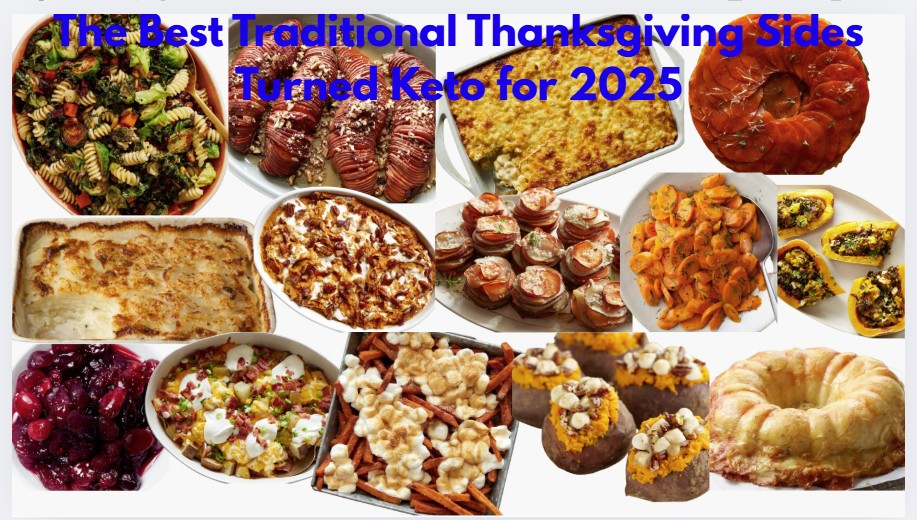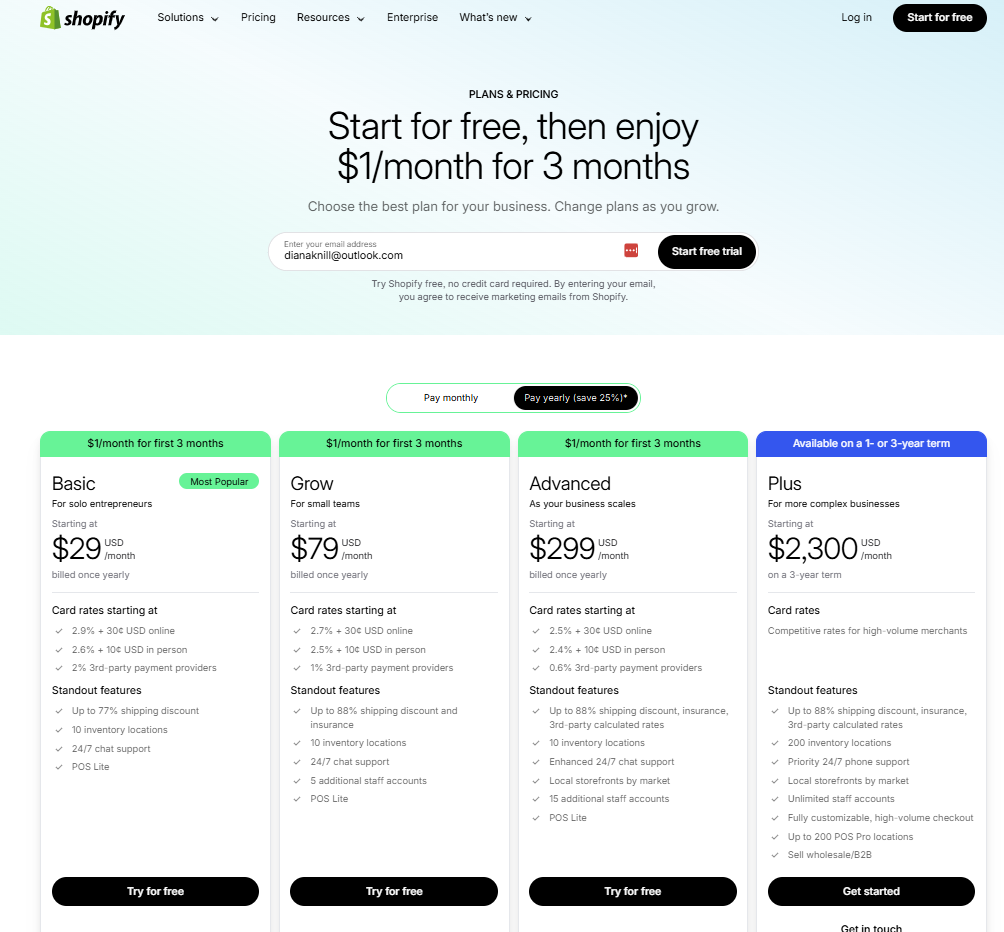There’s nothing more frustrating than pouring hours into a blog post only to watch it disappear into the void—no comments, no shares, and hardly any search traffic. Plenty of good ideas get lost that way, often because they just don’t grab readers or answer real questions people are searching for. The truth is that great content solves problems for the reader and makes them want to keep coming back. When you start with a clear focus and figure out what your audience actually cares about, your writing gets noticed. In this post, you’ll find out how to blog posts people read and Google ranks can bring long-term, organic traffic to your blog.
Get to Know Your Blog Audience
Before you start writing the next post or crafting another killer headline, ask yourself: who am I really writing for? Getting a clear picture of your blog audience lays the foundation for every post that follows. It shapes the topics you choose, your tone, and the overall experience your blog delivers. If you haven’t taken a step back to understand your readers’ needs, interests, and pain points, your posts can miss the mark, no matter how catchy your headlines or on-point your SEO strategy may be.

Why Audience Insights Matter More Than Keywords
A lot of new bloggers get stuck chasing high-traffic keywords, hoping it’ll bring a flood of readers overnight. But if you don’t know who those readers actually are or what they care about, your blog ends up feeling generic. The secret is moving beyond simple keyword research and focusing on building real connections. This approach not only gives your writing direction but also builds trust and loyalty over time.
Consider these benefits of truly understanding your audience:
- You solve real problems, which turns readers into loyal fans.
- Your posts get shared more because they feel personal and authentic.
- You waste less time guessing what to write next.
For real-world strategies, check out these tips from HubSpot about growing your blog readership with personas.
Small Steps to Get Closer to Your Audience
You don’t need fancy tools to start understanding your readers. Start with everyday, tangible actions. Here are a few practical ways to really get close to your blog audience:
- Interact in comments: Respond to every comment and notice patterns in questions or feedback.
- Run simple polls: Ask your email subscribers or social followers direct questions about what they want to see.
- Track engaged posts: Look at which blog posts get the most answers, shares, or long visits.
- Lurk where they hang out: Read through Reddit threads, Facebook groups, or Quora questions about your niche.
- Start conversations: Use surveys, open-ended questions, or even DM loyal readers. Honest replies are content gold.
You can dig even deeper by learning from proven methods to identify and engage your target audience, which show how to turn casual visitors into true followers.

What to Look For: The Core Details That Matter
While everyone says “know your audience,” it helps to have a specific checklist when you visit forums, analyze your site traffic, or talk to readers. Focus on:
- Common frustrations or pain points
- Goals or achievements your readers want
- Their typical experience level in your topic area
- The formats they like (quick lists, deep dives, personal stories)
- Topics they revisit or share often
It’s much easier to brainstorm and prioritize your blog post ideas when you have this raw information. For an extra push, try out proven ways of generating interest in your readers and building content that sticks.
The Power of Being Relatable
The most popular blogs sound like you’re talking to a friend who really “gets” what you’re going through. It’s not just about facts or tips, but about sharing your story and struggles. That’s how you build a sense of community, even if your blog is just starting out.
By putting people first, your blog turns into a space where readers want to hang out—not just a place for answers, but a true conversation.
Ask Them
If you’re wondering what your readers really want, don’t leave it to guesswork. The best answers often come straight from the source—your audience. When you take time to ask questions, whether through quick polls or deeper surveys, you can uncover the subjects that actually matter to the people who visit your blog. It doesn’t have to feel like a massive project, either. There’s real power in just starting a conversation and giving readers an open door to share what’s on their mind.
Simple Ways to Hear Directly from Your Readers
You don’t need a huge email list or a following in the thousands to get meaningful feedback. Start with a question. People usually like to share their habits, problems, and opinions, especially if they believe their feedback will improve what you offer. Here are a few direct and simple methods:
- Surveys & Polls: Use tools like SurveyMonkey, Google Forms, or even your favorite social platform’s poll feature. Keep questions short and focused. For example: “What’s your biggest struggle with [your topic]?” or “What would you love to see more of on this blog?”
- Email Questions: If you have an email list—even a small one—add a question at the end of your regular updates. Sometimes the most honest answers come from a simple email reply.
- Blog Comments: At the end of a post, invite comments by asking a specific question. Readers are more likely to answer if they feel you’re listening.
- Online Communities: Participate in relevant groups on Facebook, Reddit, or niche forums. You’ll tap into fresh opinions and trends. For example, the r/Blogging community on Reddit is full of bloggers sharing and answering questions.
- Live Feedback: Host an Instagram or Facebook Live Q&A. You get instant reactions to ideas and often spark bigger discussions.
For even more helpful questions to ask your blog audience, check out this resource with 101 ways to unlock your audience’s opinions.
When you ask, make it personal. Show people their voice matters. A simple, “I really want to know what’s working and what’s not—tell me anything!” can open doors.

What Should You Ask?
The questions you choose make all the difference. Skip the generic “What do you like about my blog?” Instead, try specific, open-ended prompts that spark real insight. Examples include:
- “What’s the biggest challenge you face in [your blog’s topic]?”
- “What’s one post you wish someone would write?”
- “Is there something you’ve never understood about this topic?”
- “Which types of posts do you find most helpful—how-to’s, product reviews, or personal stories?”
Keep it concise, but don’t be afraid to ask follow-up questions. The gold is in the details. For inspiration, see the #1 question you should be asking from this expert guide on blog surveys.
Where Else Can You Ask?
Sometimes your audience is bigger than you think. If you’re short on direct readers, try these spots:
- Quora: Type in your main topic and you’ll find a list of real questions—and answers—from people deeply invested in your niche. This isn’t just theory; Quora is a gold mine for understanding true curiosity in your field.
- Google Autocomplete: Start typing your core topic and see what pops up. Those suggestions reflect honest-to-goodness curiosity from people searching right now. It gives you a window into what potential readers are thinking.
- Other Blogs & Social Spaces: See what questions are trending in the comment sections of popular blogs. Social listening is a key part of getting to know your future readers.
If you want to dig deeper into different tactics for audience research, you’ll find powerful tips in the list of the 10 best ways to gain audience insights.
Listen, Respond, and Repeat
Opening the door for feedback is only the beginning. When readers reply, engage with their answers. Confirm you’ve heard them, thank them, and act on their suggestions when possible. Think of it as a friendly back-and-forth, not just a one-time data grab. This cycle of asking, listening, and responding builds a loyal following—and helps shape content your readers genuinely want.
Getting comfortable “asking them” might feel strange at first, but you’ll soon find your blog turning into a real conversation, not a lonely monologue.
Write a Clever Headline for Every Blog Post
Your headline is your blog post’s first impression—before a reader scrolls a single line, they’re making a judgment based on just a handful of words. It doesn’t matter if your post is the best in your niche if the title doesn’t catch a reader’s eye. More than half of people only see or share content based on the headline alone. This is why strong headlines aren’t just helpful; they’re necessary if you want your post to attract clicks, comments, and shares.

Why Headlines Matter (and How to Not Overthink Them)
A headline does a lot more than sum up your post. It acts like a tiny billboard on social media, in search results, and in inboxes. Think of it as a movie trailer—its whole job is to make people want to see more. But don’t let the pressure to be “perfect” get in your way. Seth Godin, who’s coached marketers worldwide, often reminds us that good ideas come from producing a lot, not waiting for perfection.
When writing, start with a working title. Let it be basic. Focus on finishing your draft. Later, you can come back with fresh eyes and try a handful of improved headline options.
What Makes a Headline Irresistible?
The science of a good headline isn’t as mysterious as it seems. There are specific strategies experts rely on because they work again and again:
- Promise a Benefit: Readers want to know what they’ll get—make it clear. Example: “5 Simple Steps to Organize Your Day.”
- Add Specifics and Numbers: Headlines with numbers or details grab attention. “7 Secrets for Faster Recipes” beats “Cooking Tips.”
- Make it Emotional or Surprising: Curiosity, urgency, or how something will change their life draws clicks fast.
- Include Keywords Early: Placing your main keyword toward the start helps with SEO. Research shows that clear, keyword-friendly titles get more clicks. Here’s a list of effective formats and real-world examples from Siege Media.
- Keep it Short and Direct: Aim for 6 to 12 words. That’s the sweet spot for most search and social platforms.
For more on headline structure, see proven ideas in this guide on how to write catchy blog titles.
How to Quickly Come Up With Several Good Headlines
The best bloggers don’t stop with one idea—they make a list. Try these steps:
- Write your basic headline first (even if it’s dull).
- Jot down at least 5-10 headline variations.
- Mix up the formula: Try “How To,” “List” posts, bold statements, or even a question or quote.
- Ask someone else: Share your top choices and see which stands out.
- Test and tweak: If a post isn’t performing, update the title and watch for changes in traffic.
This process often leads to headlines that spark real reader curiosity, like those found in this helpful breakdown on how to craft post titles that draw readers into your blog.
Borrow Inspiration (But Never Copy)
You don’t need to invent the wheel each time. Study successful headlines in your own niche. What are top-ranking posts doing? Which titles are widely shared? You’ll start to spot patterns: numbers, strong adjectives, clear promises. Use these formats as a springboard for your own ideas, never as a crutch.
Check out this resource from HubSpot on different types of blog headlines that boost traffic if you need fresh headline templates or just want to see proven formulas in action.
The right headline makes the rest of your work worth it, helping your blog show up, get noticed, and actually get read.

Breaking Down the Elements of a Captivating Blog Post Headline
A headline is not just a label; it’s your blog post’s handshake, promising value and inviting readers in. Getting this first impression right is key for engagement and search visibility. Let’s pull apart the most effective elements to help you write blog post headlines that not only attract clicks but also signal authority and relevance in your niche.

Use Numbers to Make Your Headline Pop
Including numbers in headlines isn’t just about lists (though they work wonders). Adding the current year quickly signals freshness, especially when users scan for up-to-date guides. For example, seeing “in 2025” or “Top 10…” in a headline stands out visually in crowded search results, showing readers that your content won’t waste their time on outdated advice.
- Year-based numbers: Great for evergreen content that’s refreshed yearly.
- List numbers: Perfect when your post is structured around actionable tips or steps.
- Specificity: Readers crave clarity—numbers provide that clarity at a glance.
Include Your Target Keyword Phrase
Your primary keyword should be unmistakable in your headline. Not only does this ensure search engines can easily index your post, but it also makes your content immediately relevant to users looking for that exact topic. If the guide is on “how to write a blog post,” work that phrase right into the title.
You can use free keyword research tools to double-check what readers are searching for and slot those exact words into your headline. This isn’t about cramming in jargon; it’s about matching what users are typing into Google to your content. Guides like the Anatomy of a Perfect Blog Post break down keyword placement with examples if you want a visual reference.
Experiment with Parentheses for Visual Variety
Adding parentheses brings visual rhythm and makes your headlines easier to scan. Use them to insert a bonus, clarify the benefit, or add context, like “How to Write a Blog Post (Free Blog Post Template for 2025).” Parentheses act like a neon sign for your headline’s unique hook.
- Call out freebies or resources: (Free Template)
- Clarify who it’s for: (Beginner’s Guide)
- Highlight updates: (New for 2025)
Weave in a Secondary Keyword for Extra Reach
Don’t settle for one keyword if you can naturally fit a second. This widens your post’s discoverability and tells readers there’s even more value inside. For example, blending “how to write a blog post” with “free blog post template” not only gives your headline more reach but also hints readers will get something extra (always a bonus).
You’ll also have a leg up on competitors, especially if other guides aren’t including that secondary promise. For more ideas on making your titles irresistible, see this set of headline writing tips for clickable blog posts.
Invite Curiosity, But Don’t Overpromise
Everyone loves a secret—curiosity pulls people in. The trick is to tease just enough to pique interest without sounding clickbait-y or vague. Balance specific benefits with a slight mystery, so people want to know the answer. Think about phrasing like “Why Most Blog Posts Fail (and How Yours Can Stand Out)” or “7 Steps You’ve Never Tried.”
When promising something special, deliver in your post. Your integrity matters. More insights on how curiosity impacts engagement can be found in this article on writing captivating headlines.
Optimize for Search and Social Sharing
Write your headline so it makes sense on every channel, not just your blog. Scan your headline from a social feed’s perspective—does it grab attention on Twitter? Would you share it on Facebook? Is it Pinterest-friendly with your featured image? Every headline should look clickable and clear, no matter where it shows up.
- Keep it concise: 55-65 characters is often ideal for both search and social.
- Test on multiple platforms: Read your headline out loud, imagine it in your Instagram bio or as a tweet.
- Visual elements matter: Pair with a vibrant, relevant image for more clicks.
If you want more headline formulas tested on real audiences, check out these 101 catchy blog title formats that boost traffic.
Refine and Adapt Over Time
The best headline won’t always be your first choice. Your title evolves—through listening to feedback, monitoring click data, and tweaking as you learn what your audience prefers. Clarity follows action. Start writing, get your post out there, then watch how your headline performs. Even seasoned bloggers test and update their headlines months after publishing.
The more you write, test, and adjust, the more headline writing feels like second nature. What you learn now compounds, making each future post easier to position and promote.
Hook Your Readers From the Start
The first lines of your blog post make or break the reader’s decision to stick around. People make snap judgments—they either lean forward, ready for more, or bounce off in search of something that actually sparks their interest. This is where your opening needs to do the heavy lifting, combining color, surprise, and clear value, all in a tight package.

The Power of a Strong Lead
Your lead—those first one or two sentences—serves as the handshake, the “here’s why you should care.” Skip it, and even the best advice further down gets ignored. You can start your post with a punchy statistic, a quirky observation, or even a brief story that signals you understand your reader’s experience.
Tip: Imagine walking into a party; you gravitate toward someone telling a funny story or sharing a wild fact, not the guest who drones on with empty pleasantries. The same goes for your blog’s opening.
Examples of Attention-Grabbing Openers
Consider techniques proven to draw readers in:
- Unexpected facts or stats: “Over 80% of new bloggers quit before their first year is up. Would you believe it all comes down to the first two lines?”
- Short, colorful stories: “Last week, I hit publish—again. Cue the tumbleweeds … until I changed just one sentence in my intro.”
- Bold questions: “Do you really know why nobody reads your blog—even after all that effort?”
- A relatable confession: “I used to worry my posts bored people. Turns out, my intros were the culprit.”
For a deeper look at smart intro tactics, check out these examples and expert tips on writing strong introduction paragraphs.
Dos and Don’ts of Blog Post Openings
Setting the right tone from the start can build trust and get your reader nodding along—or drive them away.
Do:
- Use vivid language that paints a picture or sparks a feeling.
- Keep it brief and honest—brevity shows you respect your reader’s time.
- Highlight what’s in it for the reader straight away.
- Break up text visually with bold or italicized phrases.
Don’t:
- Bore readers with clichés or tired phrases.
- Delay your main point or “bury the lede.”
- State the obvious (“Blogging is popular…”).
Good introductions answer the who, what, where, when, and why—quickly. This clarity gives readers a clear reason to keep scrolling.
For more, explore these strategies for writing killer blog post introductions—you’ll find real-world examples and actionable frameworks.
Start With the Answer—Then Show the Work
In a world packed with distractions, it pays to serve the answer first. Give readers the solution or bold claim up front, before unpacking the details step by step. Think of it as giving away the ending, then showing your work.
Not only does this strategy build trust—readers see you aren’t playing games—it also boosts time on page since those who want the why or how will happily keep reading.
Writers and editors agree this “conclusion first” approach just works. For more proven tips, see advice from pro writers on crafting strong blog post introductions.
Make Every Word Earn Its Place
With introductions, less usually means more. Every word should push your story forward, set a mood, or offer value. Cut the fluff. Edit until the only sentences left are the ones that make your reader want to keep going.
If you aim for just one thing while hooking readers, make it this: your intro should promise something no other post offers, right from the first line.
Answer Questions with Your Blog Posts

If you want your blog to stand out and draw real visitors, focus on answering real questions. People scan Google not just for entertainment, but to find solutions, advice, or even a quick fix. A reader who leaves your blog with an answer in hand is far more likely to share it, come back, and trust you on other topics. Writing posts that directly respond to common, specific questions will help you win both readers and search engine attention.
Why Answering Questions Wins Readers
Modern blogging is less about telling people what you know, and more about meeting them where they are. If your post solves a problem or fills an information gap, it instantly feels useful. The best part—Google rewards this style of blogging by pushing helpful, clear answers to the top of search results, sometimes pulling your post into a coveted featured snippet.
Benefits of focusing your blog on answering questions include:
- Building trust: When readers feel understood, they’ll stick around and turn to you for advice.
- Pulling in organic traffic: People type full questions in search bars. If your blog matches their search, you show up more often.
- Showing expertise in your niche: Clear, practical answers make you a go-to resource.
Take a look at this guide on how answering questions in your blog helps your customers and improves your standing with search engines.
Finding the Right Questions to Answer
You don’t need a PhD in research or a paid tool to find great questions. Real gems are all around you—in your blog comments, forums, social media groups, and even in your email inbox. The trick is to listen and record what comes up the most, especially the ones that feel urgent or stubborn to your readers.
Try these hands-on methods:
- Search common forums and Q&A platforms (like Reddit or Quora) for what’s trending.
- Check search engine suggestions: Start your topic in Google and see what autocomplete reveals.
- Pay attention to your own comment section: These recurring questions are prime blog post material.
For a list of powerful ways to ask your audience questions and unlock insight, explore these 101 questions to ask your readers.

Structuring a Blog Post That Truly Answers a Question
Once you know the question, aim for clarity and depth without losing the reader in jargon or fluff. Good question-answer blog posts have a simple structure:
- State the question clearly at the beginning. This shows readers (and Google) what you’re focusing on.
- Give a direct answer right away. Don’t make readers scroll forever before they get what they came for.
- Explain your answer step by step: Add details, examples, or even short how-to sections to support your claim.
- Address related follow-up questions: Anticipate what else a curious reader might wonder next. This keeps people on your site and signals authority on the topic.
- Use clear subheadings and bullet points. These make it easy for skimmers to grab what they need.
If you need a walkthrough on formatting and writing effective Q&A posts, check out this resource on how to write a Q&A blog post that gets results.
Optimizing for Featured Snippets and Voice Search
Answering questions directly is your gateway to featured snippets and voice search. Search engines love content that’s scannable and straight to the point. Use these practical tactics:
- Open with a short answer in the first paragraph.
- Use lists and tables where possible for clarity.
- Answer related questions at the end of your post, possibly in an FAQ section.
This technique increases your odds of being featured at the top of search results and getting read aloud by smart devices.
Make Your Blog a Go-To Resource
Every time a reader finds a trustworthy answer in your post, you build credibility. Over time, this leads to recurring traffic, a stronger community, and even recognition in your niche. For more inspiration, read about how simply answering questions can turn your blog into a sought-after resource.
By consistently focusing your blog around solving the exact questions your readers are asking, you transform your site from a diary into a reference desk. Readers don’t just visit—they return, share, and depend on your content.
Figure Out Exactly What People Are Asking
Pinpointing what your readers actually want to know is at the heart of writing blog posts that draw clicks, shares, and real search traffic. Sometimes it feels like playing detective—tracking down the exact things people are typing into search engines or discussing in forums. If you want your post to stand out and actually rank, you can’t stop at general topics; you need to plug into the specific questions that are top-of-mind for your audience.

Why It Matters: Specific Questions Are Your SEO Secret Weapon
If you’ve ever scrolled through Google and noticed those little “People also ask” boxes, you already know the value of focusing on real questions. These features show the exact language, confusion, or curiosity your target readers have. Writing your post to answer these means you’re working with search engines, not against them.
When your post lines up word-for-word with what readers ask, you increase the chance of landing in a featured snippet. Featured snippets (those highlighted answers at the top of the results) send enormous traffic and build instant authority without you needing aggressive marketing or paid promotion. For an extra look at measuring what gets searched the most, see this thread about checking keyword searches on Google and Amazon.
How to Uncover the Real Questions People Are Searching
What works isn’t guesswork—it’s paying attention to what people are saying. Think of this as online eavesdropping (the ethical kind). Here’s how to do it:
- Google Search Suggestions: Type your main idea into Google, but don’t hit enter. Notice the phrases that pop up in the dropdown? Those are direct from real searchers.
- ‘People Also Ask’ Boxes: On almost any search, you’ll find a section listing common related questions. These are pure gold for blog planning.
- Quora and Reddit Threads: These Q&A communities show you the nitty-gritty struggles or curiosities of real people. You can filter by topic or see top-voted questions, giving you a list of what’s truly in demand. Tips on navigating Quora’s threads appear here: Where to find threads and answers on Quora.
- Answer the Public & Similar Tools: Sites like Answer the Public visually group FAQs and “why,” “how,” or “what” searches so you can see patterns.
- Comments and Communities: Scan the comment sections of major blogs in your space. You’ll find the same issues and phrases coming up again and again.
If you want detailed steps to see when and who asked a particular Quora question (which is useful if you want to find trending, recent topics), read these instructions on viewing question details on Quora.
Making Those Questions Stand Out as Headers
Once you’ve gathered a handful of specific questions, make each one a subheading in your post. This isn’t just for looks—Google skims your headings to match your site with user queries. For example:
- How do I start a blog with no experience?
- What are the best tools for beginner bloggers?
- How often should I post to grow my blog?
This style does two things: it makes your blog ultra-skimmable for readers and it helps search engines “see” that your post is a perfect fit for popular queries.
Build a Clickable Table of Contents (and Hyperlink Each Question)
Add a menu up top in your blog post—using linked text that points to each major question and answer below. This makes your post easy to scan and keeps people on your page longer. It also encourages social shares, since readers can quickly jump to their biggest pain points.
- Put the Table of Contents right after your intro
- Link each menu item to its matching subheading
- Keep your anchor text clear: use the full question, not just “section 2” or “read more”
This step-by-step menu gives your readers (and Google) a clear guide, improving time-on-site and search visibility.
Answer the Top Questions Directly
Now, turn each question header into a mini FAQ. Give crisp, practical, and honest answers. Start with the flashiest question or the one with the most urgency, then move down the list. Don’t make people hunt for the answer—put what they need first, expand with examples, and link out if someone needs even more background.
By shaping your post like this, you turn general ideas into answer-rich guides that readers return to—and that search engines love to reward. Smart formatting here acts like a shortcut to winning trust, engagement, and higher rankings.
Tell a Captivating Story
Stories are hardwired into us. They shape how we remember ideas and, more importantly, how we relate to the people behind those ideas. If you want your blog posts to stick in the minds of your readers, storytelling is your best tool. You don’t have to write the next great novel. Simple, authentic stories can transform dry information into something memorable—and motivate people to come back for more.

Why Stories Keep People Reading
A story isn’t just entertainment; it’s a glue that makes information stick. When you wrap your blog’s advice or how-to steps in a relatable narrative, you help your reader see themselves in your post. Stories make even the most complex or technical topics feel approachable. Research and digital publishing experts agree—blogs with stories grab attention and build deeper trust with readers. One reason is that stories let people feel seen, not just taught. They instantly make your content more human.
For a deeper look on why stories engage readers far more than straight facts, read the expert breakdown from ProBlogger on why stories are an effective communication tool for your blog.
How to Weave Personal Experience Into Your Blog
Sharing your own experiences, even if they seem small, beats dry advice any day. Here are a few approaches to pull from your own life and make your blog posts more meaningful:
- Start with a turning point—a failure, win, or “aha” moment.
- Describe the scene, even briefly (location, mood, the problem you faced).
- Be honest about emotions. Readers connect with your struggles, not just your solutions.
- Share the lesson learned, but skip the moralizing.
You don’t have to reveal your entire autobiography. Even a quick story about a tool you tried (and failed with) or an honest reflection about doubts you had builds credibility. If you struggle to find personal stories, ask your readers if they have experiences to share—you might be surprised by what comes back.
Storytelling in blogging isn’t limited to “my journey” posts either. For broader perspective, see this framework for using storytelling to craft compelling blog narratives.
Story Structure Matters (Even in Blog Posts)
Even short stories work best with a beginning, middle, and end. This doesn’t mean you need a full-TV-drama structure, but clarity helps. You might:
- Set the scene: What was happening? Who was there?
- Introduce a challenge or question.
- Show what changed: Did you discover a solution? Change your mind?
- Wrap up with what you learned (or what you’d do differently next time).
Some bloggers like to use themes or even recurring “characters” in their stories. This approach can unify your content, making it feel like chapters in an ongoing journey rather than random, unconnected posts. For tried-and-tested techniques, take a look at four great story structures for blog posts.
Inspiration for Blogging Stories—Even If You Feel ‘Ordinary’
Every blogger faces the blank page. If you ever wonder what story you should share, start with these:
- Your own hard-won lessons (successes and failures)
- Interesting feedback or comments from your readers
- An experiment or challenge you took on (and what happened)
- A question from a friend or audience member that made you think
- A memorable moment you witnessed in your field or community
The best stories don’t need to be dramatic. Honesty, vulnerability, and clarity are what set your blog apart from the generic advice splattered across the internet.
Turn Your Blog Into a Place People Want to Visit Again
The more your readers see themselves in your stories—or feel invited along for the ride—the more likely they are to return, subscribe, and share your posts with others. Storytelling strengthens community and makes your advice travel further. In fact, researchers explain how turning a blog post into a story boosts engagement, guiding readers through both your experience and your solution.
Adding stories isn’t about showing off; it’s about building real connections. The result is a blog that’s both useful and memorable, the kind people return to because it feels like a conversation, not just a lecture.
4 Characteristics of a Blog Post That Tells a Captivating Story for Your Readers
If you want people to remember your blog post, you need a story at its core. Even the driest topic comes alive when you use storytelling techniques that pull readers in and make them care about what happens next. But not every story grabs attention. The most compelling blog stories share four key characteristics—simplicity, memorability, conflict, and unforgettable characters. Break these down, and you’ll see why your readers start sharing your posts instead of just clicking away.

Simple Structure That Keeps the Story Clear
A great story doesn’t need to be complicated. In fact, the best stories stick to a clear path so that anyone can follow along. Simplicity helps you avoid losing readers in extra details or side notes. Tight storytelling means every sentence moves the plot forward.
When your blog story is simple, you make it easier for readers to relate to the lesson or message. Using the classic “Hero’s Journey” structure (think: a main character faces a challenge, tries different solutions, then wins or loses and is changed) is a proven way to keep things focused. This structure works for any topic, from business tips to fitness struggles. Development experts often point out that “writing with the five senses in mind” also helps readers experience the story personally—using sight, sound, smell, taste, and touch creates a clear feeling from the start. For more on keeping stories engaging and uncluttered, check this set of tips on how to write a captivating story.
Stories That Are Easy to Remember
A blog story’s real value isn’t just in entertaining—it’s in sticking with your audience after they leave. Make your stories memorable. You can do this with vivid language, surprising moments, or big feelings. People are wired to remember situations that stand out. This means adding details that pop, creating mental pictures, and using phrases that feel real, not generic.
Think about a time you read something and wanted to share it with a friend. Odds are, it had a line that caught your attention or a twist you didn’t see coming. Use scenes and active verbs like “stumbled,” “crashed,” or “soared” so your story lingers. Explore more proven ways to write memorable scenes with these strategies for compelling storytelling.
Conflict: The Heartbeat of the Story
All stories need a problem to solve. Without conflict, your blog post won’t have any momentum. Conflict can be as dramatic as losing a job or as everyday as picking between two new apps. What matters is that your reader senses real stakes and wants to know what happens next.
Good stories put obstacles in front of the “hero.” In blog writing, this often means sharing what went wrong, what you tried, and how you eventually found a fix—or why you’re still looking for one. This not only makes your content honest but also relatable. Many of the best blogging guides explain how readers remember posts that show a journey through challenges, not just overnight “wins.” For examples of building conflict into short stories and articles, see these practical story structure tips.
Characters Readers Can Cheer For (or Against)
Strong stories have strong characters. Give your audience someone to root for—this doesn’t have to be a superhero. It could be you, a client, a fictional version of a “typical” reader, or even an obstacle that becomes a character (like a stubborn old laptop or an intimidating new routine).
In storytelling for the web, characters should feel real. Share quirks, fears, hopes, and little details that make them believable. If your blog’s main character is you, don’t be afraid to share both your strengths and bad days. When your readers see themselves in your story’s hero, or even in the villain, they stick around. Find more techniques for building relatable blog characters in this article on effective storytelling for blogs.
When these four traits show up in your blog posts, you turn everyday advice into stories people want to read again, remember, and share. Storytelling is what turns knowledge into experience—and keeps readers coming back each time.
Make Your Blog Posts Easily Scannable
People rarely read every word on a blog post. Instead, most readers scan your content, hunting for answers, tips, or the next helpful idea. If your blog feels like one endless block of text, they’ll leave without a second thought. But if your post is easy to scan—where key points, ideas, and advice jump right off the screen—readers are more likely to stay, share, and act on what they find. Writing in a scannable way isn’t just a nice touch. It’s foundational for building an engaging, useful blog that grows over time.

Why Scannability Matters (and What It Looks Like)
Research on web reading shows that most people bounce from section to section, grabbing the highlights. Dense paragraphs and long, unbroken text feel overwhelming. Scannable posts use short paragraphs, clear subheadings, and visual cues to guide the eye. They make it possible to absorb information even when reading in a hurry.
Easy-to-scan blog posts lead to:
- More time spent on your page
- Better comprehension of your key message
- More shares, comments, and conversions
According to usability studies, scannable blog posts are more effective and leave readers feeling like they’ve truly learned something. For an expert explanation of why scannable content works, check out the guide on why nobody reads your content and what to do about it.
Break Content Into Bite-Sized Chunks
Huge walls of words send readers running. Instead, keep your ideas grouped in short paragraphs—aim for two to three sentences before moving to the next line. This approach not only looks better on mobile devices, but also helps readers track their place quickly. If you have a longer explanation, add a subheading to break it up even further.
Use Subheadings and Formatting for Natural Pauses
Subheadings act like signposts. They give context, organize your thoughts, and make it easy for readers to jump to the parts they care about most. Try to use a hierarchy: H2s for bigger topics, H3s for details within that topic. Mix in bolded text to highlight key takeaways or important terms. Italics work well for quick asides or standout phrases.
Lists Are Your Friend
Lists—bulleted or numbered—help break up complex information. They’re ideal for steps, ideas, or quick advice. Lists make details skimmable instead of buried. Here’s why readers love them:
- They’re easy to follow
- Each idea stands alone
- No information gets lost
A sample list about scannable content:
- Keep paragraphs to 2-3 lines
- Use subheadings every 200-300 words
- Add bullet points for key tips or links
- Bold main ideas for emphasis
- Space out content with images or quotes
If you want a detailed walkthrough, check out this SEO action guide on how to create scannable content.
Play With Visual Breaks: Quotes, Images, and Tables
Don’t rely on text alone. Pull quotes, images, and simple tables can add variety and give the eyes a rest. Quotes—especially if they’re short and bold—act as mini-highlights. Images offer a visual anchor and can show examples, stats, or concepts. Tables work well for comparisons or quick-reference info.
Use Plain Language and Keep Things Direct
Simple words are better than fancy ones. Readers appreciate when you get to the point without extra fluff. Stick to direct statements, strong verbs, and short, punchy sentences. This not only speeds up reading but also helps your main ideas stick.
Test on Mobile and Desktop
A post that looks clean on desktop might feel too crowded or small on a phone. Preview your blog on multiple screens. Adjust spacing, headings, or lists as needed so nothing gets squished or overlooked.
The Takeaway
A scannable blog post feels like a well-organized conversation, not a dense essay. When readers can find answers, tips, and inspiration quickly, they’ll come back—again and again. For more best practices, dive into this resource on how to write scannable content for your blog.
Invest in Thoughtful Design
A well-designed blog isn’t just about looking good—it helps readers understand your message, trust your expertise, and enjoy the time they spend on your site. Visual appeal draws readers in, but clear structure and clever use of space are what keep them scrolling. People process images and visual cues much faster than text, so investing in thoughtful design pays off right from first glance. As Malcolm Gladwell points out in Blink, our brains make snap judgments about credibility and quality almost instantly, guided by visual signals. If your blog looks cluttered or hard to read, it can quietly send readers away before your writing has a chance to connect.

Make Visuals Work For You
Great design starts with your visuals. Relevant images, helpful diagrams, authentic photos, and well-made charts can break up dense sections of text and help drive points home. Avoid the classic mistake of using stiff, clichéd stock photos; instead, lean toward real, life-like pictures whenever you can. Free resources like Unsplash or Pexels offer a library of images that feel genuine, which can immediately boost trust and connection.
Charts and infographics clarify complex ideas, and custom illustrations add personality to your brand. For inspiration on blog post design that uses visuals well, the team at SurferSEO shares excellent pointers and examples in their breakdown of best practices for blog design.
Prioritize Clear Formatting
Readability is everything. Well-placed headers, bullet points, and consistent text formatting guide readers’ eyes and make your posts easy to skim. Make sure every section is clearly separated—no one wants to wade through an endless gray block of words. Keep font choices simple, and use larger font sizes for main body text so that reading feels effortless, even on smaller screens.
Good formatting also means using margins and white space to separate ideas and avoid visual overload. Careful use of bold and italics helps highlight key points without overwhelming the reader.
Think About Your Layout
How you lay out your site can have a big impact on user experience. Most users scan content in an F-shaped pattern, focusing first along the top and left side. Put your most important headers, calls-to-action, or key facts in these areas for maximum impact. Mobile optimization matters: the best blog themes respond well across devices, so double-check that nothing gets awkwardly squeezed or hidden on smaller screens.
Choosing a solid template is much easier (and cheaper) than hiring a designer. Ready-made WordPress themes like Elementor or OptimizePress provide flexible, built-in layouts that keep things looking sharp and professional from the start. For more ideas, check out these real examples of standout blog designs.
Spacing, Font Choice, and Margins
Small tweaks in spacing and font size make a big difference in how your writing “feels” on the page. Don’t crowd the text: generous margins and plenty of white space help readers’ eyes relax, reducing fatigue over longer posts. Larger body fonts (think 16px and up as your baseline) boost comprehension and keep your blog accessible, especially for mobile users or anyone with vision challenges. Spacing between paragraphs and images keeps everything balanced and welcoming.
Keep Consistency (But Leave Room for Personality)
A visually cohesive blog tells readers you care about detail. Use a clear color palette, stick to a few well-matched fonts, and be consistent with the look of your images and headers. This builds a recognizable visual “brand” that makes your posts feel unified and professional. At the same time, don’t be afraid to experiment with a splash of color, a playful illustration, or meaningful quotes that set your posts apart.
Want more hands-on tips? The blog at Feather.so rounds up actionable ideas on thoughtful visual blog design, showing how small design decisions create a big first impression.
Practical Tools for a Strong Design Foundation
- Free image resources: Unsplash, Pexels (use life-like images)
- Ready-made WordPress themes: Elementor, OptimizePress, GeneratePress
- Simple editing tools: Canva for graphics, Google Fonts for typography
- Design inspiration: Review collections of beautiful blog design examples that merge great content with strong visuals
When you treat your blog’s design as part of your message, you make your posts easier to enjoy, share, and remember. Each visual element—no matter how small—contributes to the feeling readers take away from your site. Thoughtful design earns trust before a single word is read.
Be Authentic in Your Writing

Authenticity has become a rare commodity online. With only a small slice of people genuinely trusting brands—especially among younger readers—bloggers who keep it real have an instant edge. Realness isn’t just about being “nice”; it’s about writing openly, sharing your unique perspective, and clearly owning both your wins and stumbles. Authentic content isn’t always pretty, but it consistently builds the kind of connection that lazy, click-chasing posts can’t touch.
Being honest, vulnerable, and true to what you believe will reward you with more engaged readers, stronger brand loyalty, and real emotional bonds. Below are strategies and mindsets to help you bring authenticity into every post.
Why Authenticity Matters More Than Ever
People crave something real when they read blogs. Readers spot hype, recycled advice, or fake enthusiasm within seconds. Being authentic goes far beyond what’s trending or optimizing for search—it’s the backbone of connection, trust, and influence.
Here’s the difference authenticity makes:
- Trust grows: Readers recognize when you’re showing up honestly, not just copying what’s already out there.
- Loyalty deepens: People come back for your viewpoint and your voice—not a bland, “safe” brand persona.
- Emotional connections last: When you admit missteps or ask tough questions, you give others permission to open up too.
Building this trust doesn’t happen overnight, but every genuine word and shared experience brings you closer. For more strategies, explore these practical tips on building trust through authentic blog writing.
Write Like a Real Human (Not a Corporate Robot)
Think of the last blog post that pulled you in. Odds are, it sounded like a real person, not an ad, was talking to you. People relate to stories that contain real opinions, experiences, and words you’d use in everyday life.
Try these approaches:
- Use “I” and “you.” Stay conversational.
- Write first drafts as if nobody will read them—remove the filter, then clean up for clarity later.
- Share what you’re still learning. “Here’s where I’m stuck,” is more authentic than pretending you always have the answer.
When honesty and personality shine through, readers respond with comments, shares, or sometimes their own stories.
Tell the Truth (Even When It’s Messy)
Transparency sets your blog apart from yet another website full of half-truths. Authentic bloggers admit their limits, share failures, and own their bias. Being clear about what you don’t know or can’t guarantee shows maturity—and readers pick up on that instantly.
Consider sharing:
- Mistakes and what you learned from them
- Times you changed your mind on an issue
- Behind-the-scenes challenges, not just the highlights
Companies like Buffer have built a community by laying bare their business struggles, publicizing salaries, and sharing the setbacks along with the wins. This kind of radical openness isn’t just for brands. It’s for solo bloggers, side hustlers, and anyone who wants to build lasting trust. See how others have done it in this guide, 7 trust-building content writing techniques.
Show Your Values in Action
People want to know what you stand for—and how you put those beliefs into practice. Authentic brands and bloggers aren’t afraid of losing a few readers if it means standing up for something bigger.
For example, Patagonia famously tells customers to buy less (even if it means fewer sales) and openly talks about climate action. Buffer’s open salary and revenue reports keep followers invested in their story. On the personal blogging side, showing your own process or ethics—like reviewing products you’ve bought, not freebies, or sharing how you balance honesty with sponsorship—signals you play by your own rules.
For a fresh look at brands that use authentic communication well, explore examples of brands with authentic communication.
Keep Your Writing Consistent With the Truth
Don’t try to be everything for everyone. Find your voice and keep it steady, so readers know what to expect. This doesn’t mean never changing your mind; it means not pretending for likes or clicks.
Techniques for staying on track:
- Write a “values statement” for yourself and refer to it regularly.
- Only recommend what you love or have genuinely tested.
- Say no to sponsored posts or partnerships that don’t fit your brand or gut feeling.
Consistency, over time, helps people trust your motives and message.
Invite Real Conversation
Building an authentic blog isn’t about preaching or always having the last word. It’s about opening doors for back-and-forth. End your posts with genuine questions or prompts. Respond to comments with curiosity, not canned responses. Encourage readers to share their stories, disagreements, or improvements to your ideas.
True authenticity lives in that ongoing, transparent exchange—where no one has to play a part.
If you want to go deeper on building audience trust with authentic blog content, see these proven habits in how to build trust with your blog.
Bring more of yourself to every post. Authenticity isn’t just good ethics—it’s a direct route to deeper readership, more meaningful impact, and a voice that stands out loud and clear.
Why Radical Transparency Gives Your Blog an Edge

If you want your blog to rise above the noise, there’s one trait that instantly separates you from the crowd: radical transparency. Being clear and honest about your experiences—successes and failures—does more than set you apart. It earns trust, signals confidence, and draws the kind of loyal following that keeps coming back for the real story, not just surface-level tips.
Transparency is more than simply “telling the truth.” It’s about pulling back the curtain so your audience can see the whole picture: mistakes, behind-the-scenes numbers, real costs, even doubts and pivots along the way. In a sea of curated perfection, open honesty is magnetic.
What Radical Transparency Looks Like in Blogging
Radical transparency means you’re not just sharing the good, Instagram-ready moments. You’re open about your journey—warts and all. Here’s how that can look in your own posts:
- Share the messy details. Don’t gloss over costs or flops. If starting a blog cost you more than expected, spell it out. If you failed at your first product launch, admit it. Readers connect with storytellers, not infomercials.
- Say what didn’t work (and why). There’s huge value in laying out failed strategies or ideas. When you share what backfired or missed the mark, you save your audience real time, money, and frustration.
- Show your workflow, not just results. Walk readers through your process. Instead of only reporting traffic spikes and big wins, break down the experiments, setbacks, and lessons learned along the way.
If you need to see the real-world impact radical transparency can have on content and sales, check out this guide on how radically transparent content builds trust and sells.
How Radical Transparency Builds Authority and Trust
When readers see you risk embarrassment or admit mistakes, two things happen. First, you’re viewed as more believable—people know you’re not hiding unpleasant truths. Second, you become more likable. The “expert” who shares both wins and losses signals strength and humility.
- Trust grows quickly when you tell the whole story, not just polished highlights.
- Readers feel invested in your journey. They cheer your wins because they’ve witnessed your setbacks.
- Search engines notice too. Honest, well-detailed posts often rank higher because people spend more time reading and sharing them.
Buffer is one company that’s built their brand on this approach, posting open salary reports and real case studies—warts and all. Their experience proves radical transparency creates strong, lasting reader loyalty.
Speak Like a Human, Not a ‘Brand’
Radical transparency won’t stick if your language feels stiff or corporate. Write how you talk to friends—clear, direct, conversational. Short sentences and simple words work best. Ditch buzzwords and industry jargon when you can. Don’t overcompensate with humor or slang; just aim for natural.
- Use “I” or “we” when describing your actions.
- Own your mistakes in plain language: “I messed up by…” or “This didn’t work because…”
- Ask your readers straight out how they’d handle similar situations.
For ways to stay genuine in your posts, explore steps in how to be more authentic in your writing.
Why Admitting Failure Sparks Deeper Connection
Perfect people are intimidating, not inspiring. By admitting failure, struggle, or regret, you build bridges. Readers see themselves in your story. This creates a powerful loyalty. A single transparent post about losing money, struggling with a launch, or having doubts can spark hundreds of genuine replies. It’s how blogs become communities.
Some of the most viral posts and podcasts started with an honest failure or tough lesson. When you turn losses into open, useful stories—including numbers, exact steps, or what you wish you’d done differently—you give your audience something rare: the truth behind success.
If you want more tactical ideas about building an honest blog, check out this advice on how to keep your blog authentic.
Takeaways: How to Make Radical Transparency Your Secret Weapon
- Use short, clear sentences to share facts, not fluff.
- Admit your biggest mistakes up front and share lessons learned.
- Talk about money, time, and real challenges in numbers and stories.
- Engage your audience by asking what they want to see you try (or retry).
- Stay grounded in your core values, even if your truth turns some readers away.
Being radically transparent takes guts, but it’s the quickest route to standing out online—and creating the kind of blog people talk about, trust, and rely on.
Make Your Blog Posts Portable (and Mobile-Friendly)
If you want your blog to reach more people, it’s not enough to make sure your site looks good on a phone. Today’s readers want flexibility—they might scan your post over coffee, listen while commuting, or save an infographic for later. Mobile-friendly is now the floor, not the ceiling. Your content needs to move with your audience, meeting them wherever (and however) they want to learn. That means expanding your blog posts into different formats, making your hard work truly portable and far more useful.

Why Portability and Accessibility Go Together
People move fast and switch devices often. Someone starts your blog post on a laptop at work, then wants to finish it later on a phone—or maybe listen as a podcast on the bus. Portability means giving readers options. When you offer your insights in audio, video, or slide decks, your content meets people wherever life takes them.
But there’s another benefit: accessibility. Not everyone can (or wants to) read text-based posts. Audio and video let you welcome more people into your community, including those with visual or reading difficulties. Making your work portable isn’t just smart—it’s inclusive and ethical. For practical examples, see how others are expanding content reach by repurposing written blog posts into videos.
How to Transform Your Blog Posts for Anywhere, Anytime Use
Turning a single post into a range of formats sounds like a lot of work, but it’s usually much easier than starting from scratch. Here are several smart ways to repurpose your content without losing your message:
- Create bite-sized videos: Sum up key ideas on camera or with slides. Think Instagram Reels, TikTok, or YouTube Shorts. This brings your point to audiences who’d rather watch than read.
- Record it as a podcast episode: Read your blog aloud or chat with a co-host about the topics you covered. Don’t forget to choose reliable podcast hosting for easy listening on the go. For tips on getting started, check out methods for repurposing your blog content.
- Turn graphics and tips into infographics: Visual summaries help people remember your main points—and they’re super shareable on Pinterest or LinkedIn.
- Make downloadable checklists or slides: Slide decks distill big ideas into a format that’s perfect for presentations or offline use.
- Share takeaways in short social posts: Twitter threads, quick LinkedIn updates, or even story slides keep your message traveling.
- Use GIFs and visual quotes: Add personality and keep screen-weary readers engaged.
Repurposing stretches each post’s impact and lets readers pick the format that’s right for them.
Practical Steps to Make Your Blog More Mobile-Friendly
While multi-format content is key, the basics of mobile optimization are still essential. According to Stellar Content, making sure your site is truly mobile-friendly means:
- Using responsive themes so your blog automatically adjusts to any screen size.
- Avoiding huge images or slow scripts that clog load time.
- Keeping paragraphs short and headers clear for easier scrolling.
- Making buttons and links large enough for thumb navigation.
- Checking that pop-ups don’t disrupt reading on smaller screens.
If these basics are missing, even the best portable content won’t get much love from a mobile-first world. For more detailed tips, dive into this resource on how to make your website mobile-friendly.
Build Portability Into Your Blog Process
Shaping content for portability gets easier with practice. Start by outlining your main points and highlights. Write with the idea that these may become video scripts, audio outlines, or shareable graphics. Use natural pauses and visual cues (like bullet points or callouts) which double as built-in podcast or video prompts. The more you format your writing to be sliced, summarized, or spoken, the simpler it is to repurpose later.
Accessibility Isn’t Extra—It’s Standard
Modern content creators know that accessibility and reach go hand in hand. Offering blog posts in multiple formats invites everyone to the table. Plus, it signals that you care about your entire audience, not just those who consume information in one way. For more strategies on extending your content’s value, see these ideas on repurposing blog content into new media.
By investing the extra time to make your blog posts portable and mobile-friendly, you’ll reach more people, help more readers, and put your blog on firmer footing for the future.
Prioritize Quality Over Quantity
The blogging world is crowded. In the early days, sticking to a writing schedule could make you stand out. Fast-forward to 2025—publishing just for the sake of consistency is no longer enough. Readers and search engines both want meaningful, in-depth content. Posting every day only works if you actually deliver something valuable each time, and let’s be honest, most people can’t keep up with that pace and keep their standards high. Now, it’s quality that cuts through the noise—good writing, deep research, strong opinions, and content that actually helps your readers.

Why Quality Beats Quantity in 2025
Think about your own habits—do you go back to blogs that churn out quick, generic posts? Or do you bookmark the sites that always seem to have a fresh, detailed take? The answer is obvious. Readers crave substance, not fluff. Search engines echo this, bumping up posts that answer real questions and go deeper than the competition. As the Reddit blogging community points out, pumping out content for the sake of the algorithm is outdated advice. In 2025, Google cares about value, not volume.
A few standout posts can outperform dozens of half-baked ones. If you do your research, provide insight, and add something new, you’ll win trust—and traffic. For even more support, this Medium essay explores the power of one great paragraph over 100 average ones.
Standing Out in a Saturated Market
With so many bloggers covering similar topics, the secret sauce is differentiation. How can you offer something your competitors can’t (or won’t)? Your strength might be your real-world experience, your gift for humor, your knack for visuals, or deep industry knowledge. The trick isn’t to write more, it’s to write what only you can write. Consider these approaches:
- Go twice as deep: Make your posts longer, more researched, and more practical.
- Use your own stories: Share firsthand experiences, wins and losses.
- Highlight your expertise: Build trust by showing, not just telling, what you know.
- Try new content formats: Video, infographics, interviews, or experiments.
A personal touch is magnetic. For me, detailed long-form posts work; for you, it could be storytelling, news breakdowns, or original research. If you want more ideas on carving out your unique space, see these strategies for standing out in a saturated niche.
Finding Your Competitive Advantage
No single formula fits everyone, but these questions help shape your strategy:
- What do you know or do better than most in your space?
- Where can you add depth others skip?
- Is there a unique format or tone you can make your own?
Being willing to spend more time on each post—digging deeper, polishing harder, adding more value—sets your work apart. According to experts at The HOTH, longer and more detailed posts have greater impact, but only if the quality backs up the extra length. Don’t stretch a 500-word idea into 5,000 words just for word count; make every section serve a real purpose.
Quality Content Takes Time (and That’s Okay)
It’s common to see successful bloggers putting out just a handful of posts a year, sometimes less. But each one is the best resource on the topic. The focus is always on being helpful, clear, and comprehensive—never on hitting a daily or weekly quota. Quality content often means:
- More research up front (but less time wasted writing filler)
- Careful outlining and editing
- Real feedback and updates to improve your work over time
This approach builds a library that gets better with every year, not a landfill of disposable posts. For inspiration, check out advice from pros on how to differentiate your blog in a crowded space.
The Bottom Line
Today, blog success isn’t about who publishes the most—it’s about who publishes the best. Shift your aim from volume to value. If you can solve a reader’s problem better than anyone else, you don’t have to post every day. Focus on creating genuine, standout content, and let your best work do the heavy lifting for your blog’s growth.
Show Them the Numbers

People want proof. When you state that a particular blog strategy works, readers want to see numbers or real-life examples that back you up. Nothing builds trust faster than pulling open the curtain and sharing honest data, whether that’s your traffic surge, income growth, or even mistakes. Showing your numbers takes some guts, but it instantly separates you from others who just talk a good game.
Getting specific with numbers not only boosts your personal credibility, it also helps your blog attract more attention in search and on social. Original stats signal that you know your stuff and have the receipts to prove it.
Why Sharing Data Matters
Being transparent with your data does more than just prove you know what you’re doing. It shows you value truth over hype and helps readers feel safe taking your advice. Blog posts filled with specifics—concrete revenue reports, real user numbers, or in-depth results from experiments—get remembered and shared.
Numbers add a layer of reality that’s impossible to fake. When I started posting my income reports and revealing behind-the-scenes costs, engagement jumped. Readers finally saw the real steps, results, and struggles, which made my story more believable.
There’s another benefit: posts with unique data often earn more backlinks (a big deal for SEO). Backlinko’s analysis on the power of original research and data highlights how these types of posts are magnets for attention, citations, and shares.
How to Find the Best Data for Your Blog
You don’t need to run a big survey to offer valuable insights. Sometimes your best data is sitting in your website analytics, product sales, or email open rates. Screenshots, growth charts, or even monthly expense breakdowns help readers grasp your process. If you’re covering a topic outside your own experience, pull stats and quotes from trusted sources or expert reports.
Simple ways to add credibility with numbers:
- Share your own stats: traffic, sales, open rates, or conversions.
- Reference recent studies, noting where data comes from.
- Use graphs or tables for before-after comparisons.
- Quote known experts to reinforce your main points.
People trust what they can see. Jessica Thiefels’s guide on using research in your blog breaks down how to find quality sources and where to look for trusted, up-to-date data.
Tips for Presenting Data That Builds Trust
How you share numbers matters. Tossing big figures around with no context or explanation will make readers suspicious (or just confused). Instead, use charts, screenshots, or bulleted recaps to keep it clear and simple.
- Always explain where your data came from.
- Add your own notes: point out surprising results, trends, or mistakes.
- Show “process” not just “outcome” (share how you got there).
- Keep numbers recent—fresh data shows you’re paying attention.
When in doubt, transparency wins. If you made a mistake, include it. If a post flopped, say why. Forbes offers more ideas for making your blog more credible with statistics, such as including expert quotes and sourcing every fact.
Use Data to Spark Conversation
Numbers have another superpower: they invite feedback. Share your process in detail, and readers will jump in—sharing their own data, asking about your choices, or offering new angles. This kind of real, interactive discussion not only helps you fine-tune your advice, but also builds a true community around your blog. The credibility that comes from open sharing can set your blog apart from competitors who stick with vague or theoretical tips.
For extra reading on how solid numbers and transparency pay off in blogging, check out this piece on building blog credibility with data.
Being open about your numbers isn’t about bragging or showing off. It’s about trust, honesty, and clarity. Your readers—and your future self—will thank you.
The First Step: Gathering Real Data Before You Write
Information hits harder when you back it up. If you want your blog posts to be trustworthy and actually useful, you have to start with solid data. This means taking the extra time to gather numbers, research, and examples before you even type your first sentence. The process doesn’t have to be intimidating—think of it as setting the stage for a story that people will trust and share.

Without reliable data, even the best-written posts are just opinions. Pulling in facts, statistics, and fresh insights gives your advice staying power. Readers spot the difference right away—they’ll remember your blog because you went the extra mile to prove your point.
Where to Find Credible Data for Your Blog
There’s no one-size-fits-all method for pulling together good information. Some of the best data for blog posts comes from sources you might already have access to:
- Experiments: Test a theory or process yourself. Even simple side-by-side trials can surprise you and generate share-worthy results.
- Personal observations: Track something over time—a blog’s growth, a tool’s impact, a routine’s effects. Small patterns often spark big insights.
- Surveys and polls: Ask your readers for feedback. Even with a small audience, you might spot trends or pain points worth diving into.
- Scraping public data: Use basic tools or scripts to collect information (always check legal and ethical guidelines first). This can uncover angles others haven’t shown.
- Reputable research and studies: Pull key stats or findings from trusted studies, government sites, or industry leaders.
- Expert commentary: Reach out for quotes from credible voices in your space.
You can check out even more ideas and resources in this guide to blog research: how to find the best sources and data.
Vetting Your Sources: Don’t Trust Every Stat Online
Not all data is created equal. Double-check your sources before you build your argument on them. Stick with information from:
- Well-known experts and researchers
- Official reports (think government agencies, universities)
- Recognized industry tools and analytics platforms
Avoid statistics without sources or numbers quoted only in sales pitches. For a step-by-step approach, this primer on how to easily find credible sources for research and blogging will help you avoid misinformation.
Using Data That Sets Your Blog Apart
The best blogs don’t just repeat what’s already out there—they add something new. Try these approaches to make your data relatable:
- Turn numbers into visuals: Simple graphs, screenshots, or annotated images help readers grasp concepts at a glance.
- Summarize hard-to-read studies: Pull out key findings and write them in plain language. This saves your readers the heavy lifting.
- Compare and contrast: If you’re reviewing a product or strategy, line up the data so it’s easy for readers to spot differences or pick the right option for them.
- Offer your own perspective: Explain what the data means in your words, or point out something that others missed.
A quick scan of this curated list of 100 data sources for content creation will give you a sense of what’s available and how to find numbers that really matter.
Making Data Collection a Habit
The more you practice gathering information, the faster it gets. Set up a spreadsheet or use a notebook to track numbers, quotes, or links as you find them—even if you’re not sure where you’ll use them yet. Over time, you’ll build a personal library of insights, making future blog posts sharper and easier to write.
Quality data isn’t just window dressing—it’s proof that you care about your readers’ needs. Starting your writing process with real numbers and research gives your post authority, honesty, and a big leg up in building long-term traffic.
Final Thoughts: How to Write a Blog Post That’ll Captivate Your Readers

You’ve seen the tactics—answer real questions, tell authentic stories, and always back up your claims with honest data. But truly captivating blog posts do more than just check a list. They connect with the reader, hold attention, and inspire action. If you want each post to stand out in a crowded world, focus on the deep stuff: connection, clarity, and caring about what your audience needs. These final ideas tie everything together, so your writing doesn’t just inform, but actually sticks.
Keep Your Audience Front and Center
The most unforgettable blog posts feel like a direct conversation. You’re not writing for everyone, but for someone specific. Make each post answer a clear need or curiosity. Ask yourself before you hit publish: does this make life easier, more interesting, or more fun for my reader? If you’re not sure, rework until it does.
Tips for staying audience-focused:
- Imagine a real person reading your post. Write as if you’re talking to them.
- Tweak your tone and examples to match their experience or interests.
- Offer value in every section, even if it’s just a fresh perspective or a personal anecdote.
Check out this practical breakdown of how to write a blog post that your readers love for more audience-centered strategies.
Mix Structure With Heart
Great structure keeps your writing organized, but don’t let outlines rob your post of personality. Let your voice come through, even in structured sections. Add little asides, share genuine doubts, or sprinkle in a memorable detail.
Balance looks like this:
- Use headings and lists for clear navigation.
- Include stories, jokes, or small observations to avoid sounding like a robot.
- Edit for clarity, but keep sentences that sound like you.
Want more tips? Explore these expert-backed guidelines for writing engaging blog posts that combine order with original voice.
Make Your Post Worth Returning To
A captivating blog post is one your reader can’t help but bookmark, share, or refer to when a friend asks, “Hey, do you know a good resource for…?” That kind of staying power comes from depth, care, and practical value.
Ways to add lasting value:
- Include unique data, tools, or templates—real “extras.”
- Answer not just the main question, but related follow-ups a reader might have after finishing.
- Invite feedback or questions in the comments to turn your post into the start of a conversation.
Learn more from real bloggers sharing how they make posts analytical and memorable.
Edit Ruthlessly, but Keep the Spark
Editing is where clarity shines. Cut what’s confusing, repetitive, or long-winded. But don’t edit out your quirks and honesty—those are what make your blog yours.
A solid editing process includes:
- Reading aloud to catch awkward phrasing.
- Replacing jargon with everyday words.
- Shortening sentences without losing meaning.
- Keeping surprising, funny, or vulnerable details (unless they distract).
You can take inspiration from this approach on writing the perfect blog post where the balance between depth and delight pays off.
Keep Learning and Testing
No two audiences are exactly alike, and no advice is one-size-fits-all. Watch what your readers comment on, which posts they share, and how they respond to your stories or stats. Adjust your style and approach with each new piece.
Simple ways to stay adaptable:
- Check analytics for top-performing sections or topics.
- Ask directly for reader feedback—what did they like or skim over?
- Experiment with new formats (audio, video, guided walkthroughs).
For an extra layer of engagement, take a look at writing effective blog posts guidelines that also promote continuous learning.
A blog that captivates is never an accident. It’s the sum of empathy, honesty, structure, and clear effort. As long as you write with care and curiosity—always with your reader’s needs in mind—you’ll keep growing.
Combine Honest Writing with Smart Promotion
Combining honest writing with smart promotion builds a blog that lasts. When you focus on real questions, share your experience, and show your work with data, people stick around and trust what you share. Clear organization, good stories, and authentic details make your posts worth reading and sharing.
Every strong blog leans on these basics: write for your reader, stand behind your advice, and give your best. But to keep growing, you need more than just solid posts—you have to get the word out. Promote your content where your audience hangs out, update older posts, and look for ways to get your work in front of new readers. The mix of valuable writing and steady promotion pays off over time.
When you aim for quality with each post and keep connecting with people, your blog gains reach and respect. Thanks for reading—if you have your own tips or stories about building blog traffic, share them below. Every insight helps us all learn and grow together.















